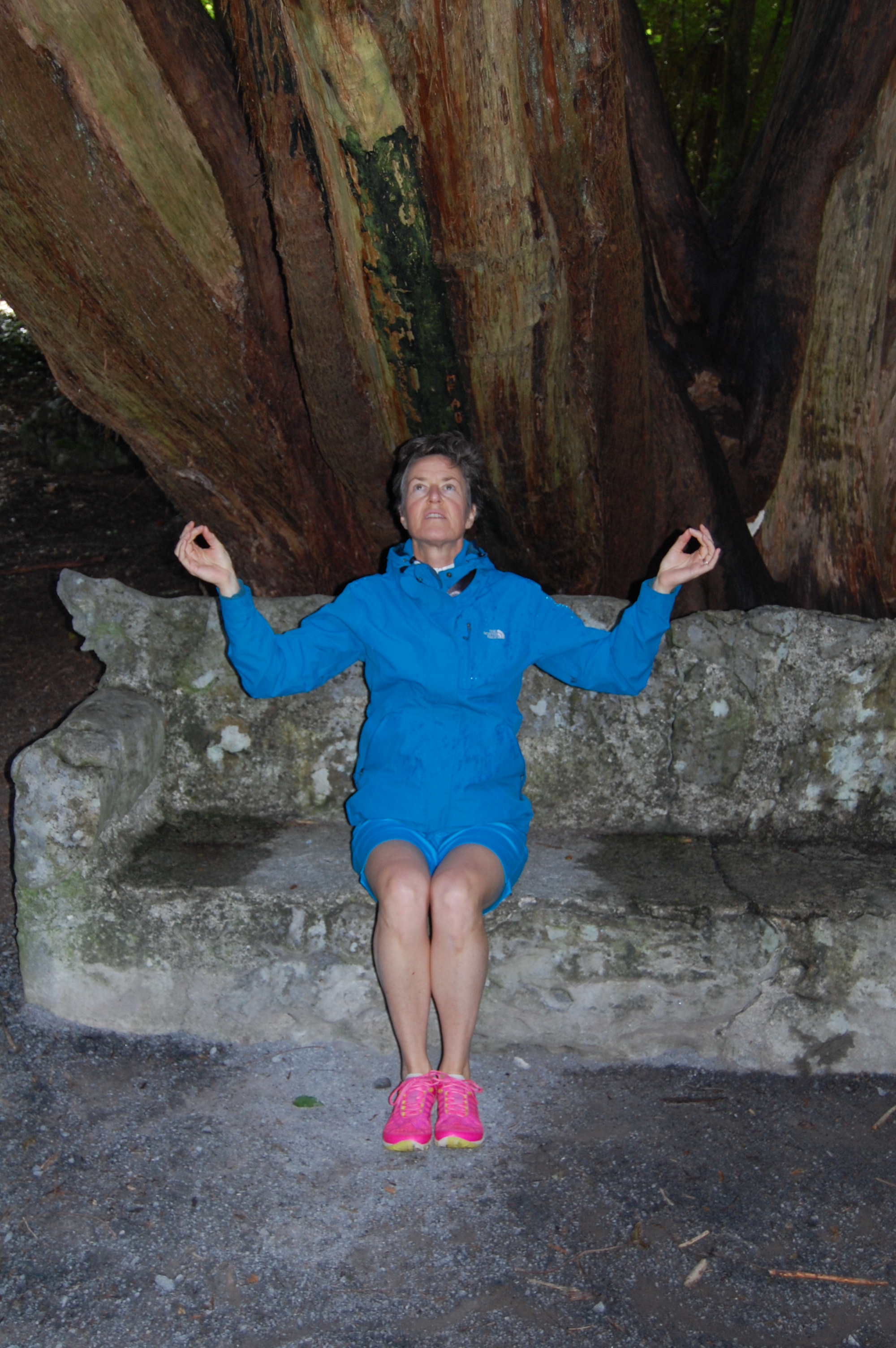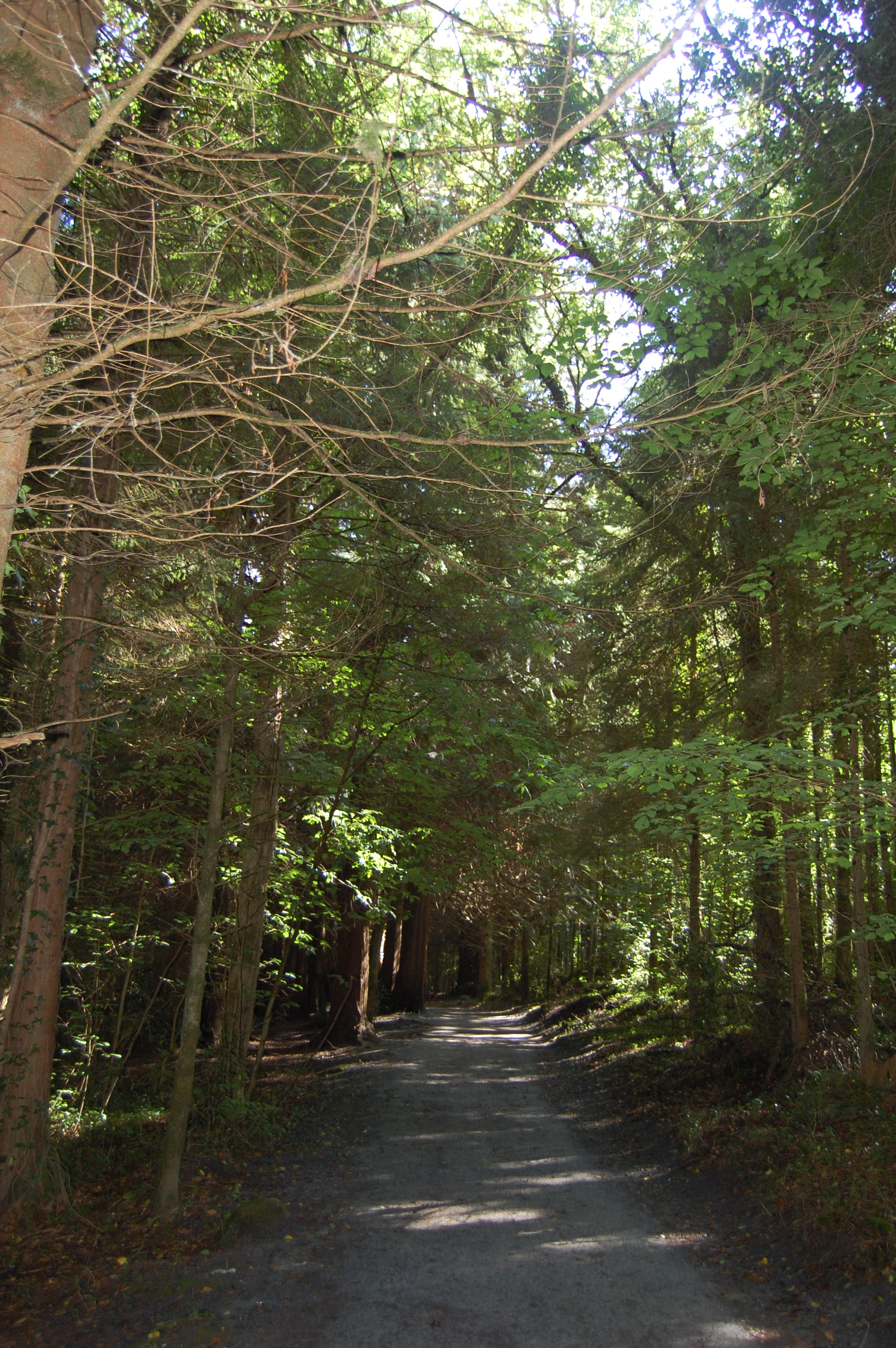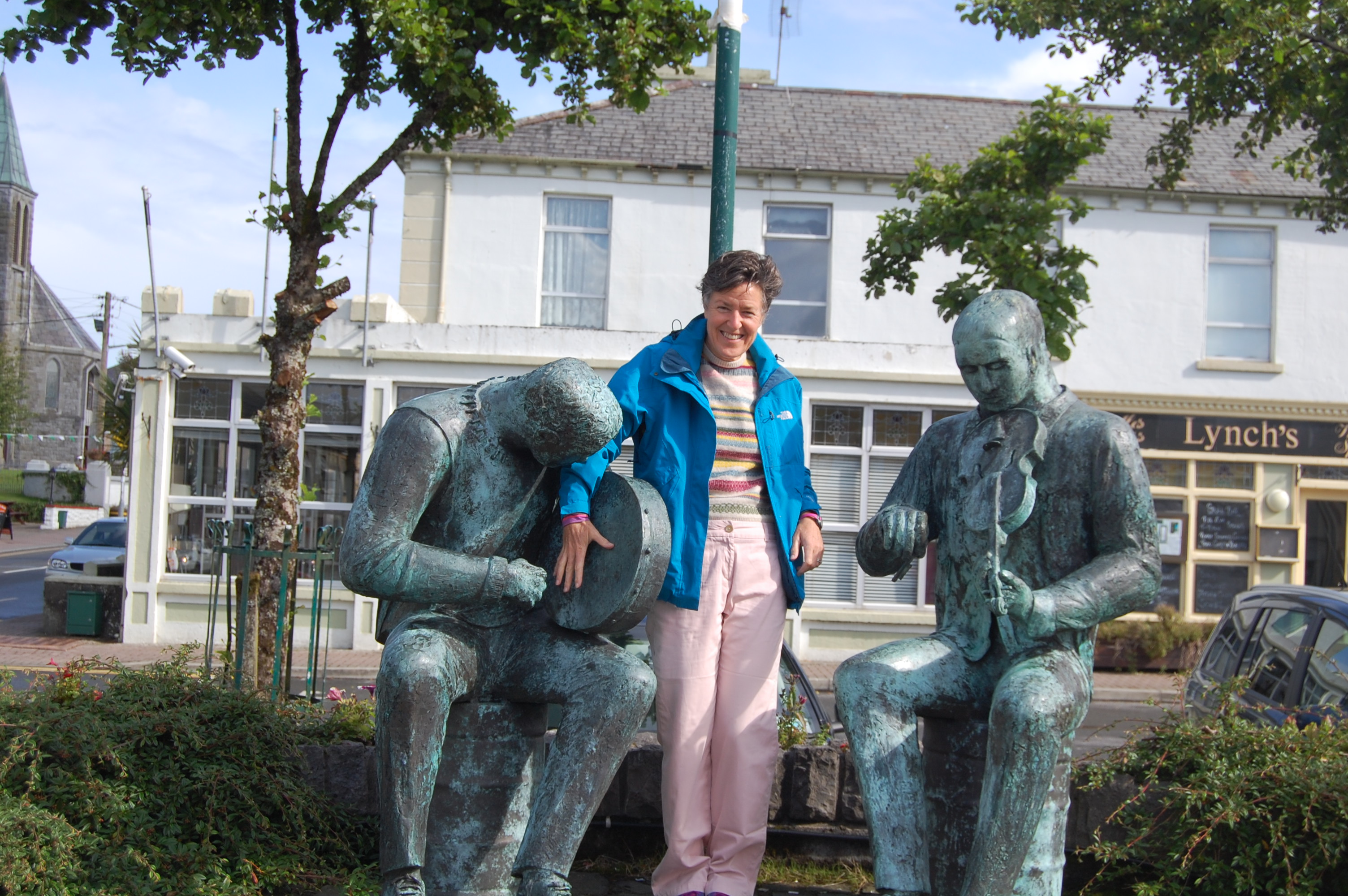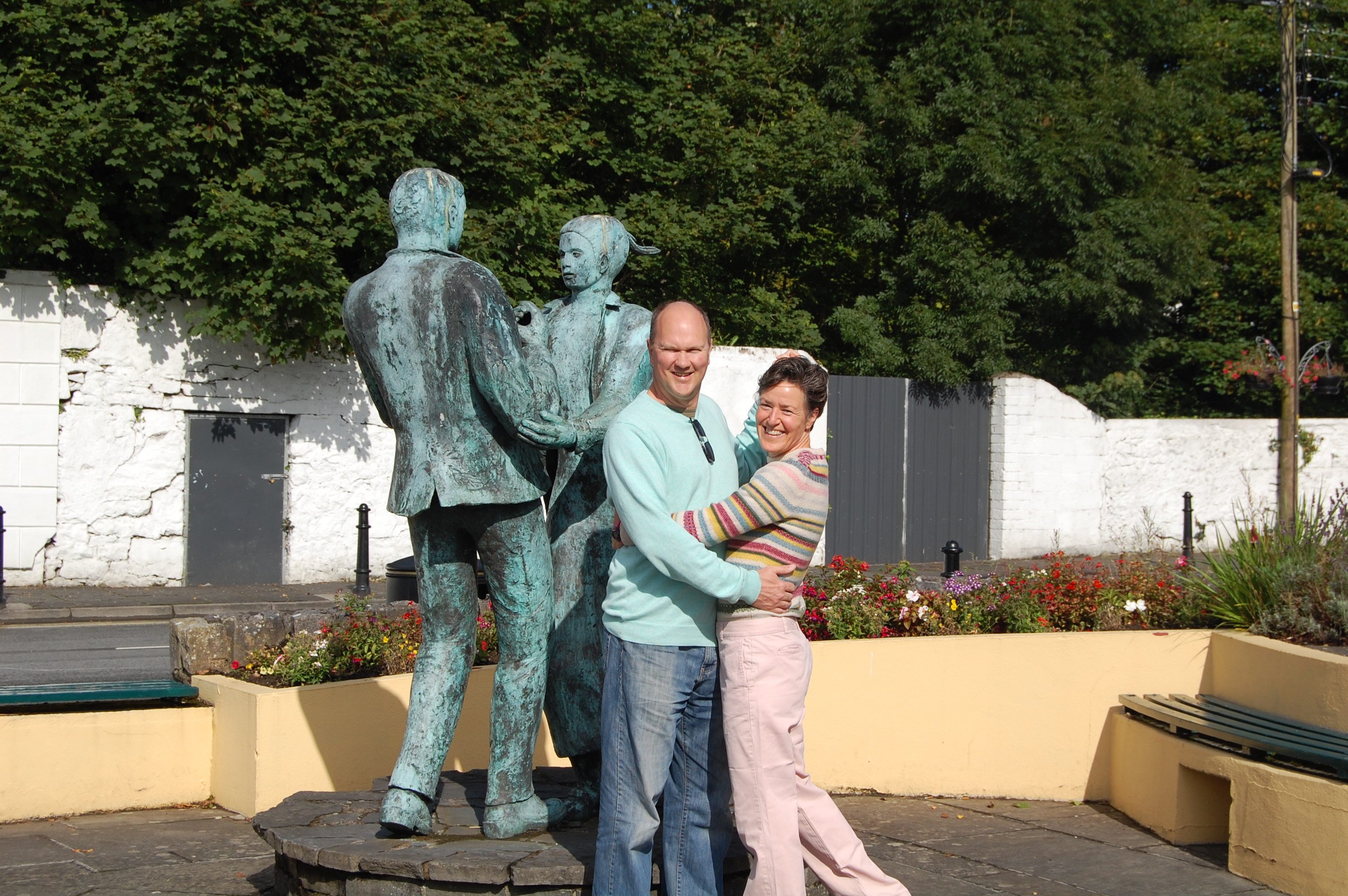Hanging with the Coole people
We cycled the long curving promenade that surrounds Salt Hill and Galway Bay, visiting a famine memorial that pays tribute to the captains and crew that delivered Ireland's emigrants safely to America, Australia, and other ports. It listed a sampling of 100 ships that left from Galway in the 1800s.
We walked through the charming Latin Quarter, enjoying buskers playing the Pogues and John Denver. The jewelry shop where the first Claddagh ring was made is on one street. We stood near Galway's cathedral as a storm approached. As the 11 a.m. mass let out, I was struck by the joy with which people greeted one another. I felt like I was in an airport arrivals lounge. Two young girls skipped up and down the cathedral steps, entertaining themselves as if they knew social time would stretch out a while.
I pay attention to dogs wherever I travel and I was struck that the Cavalier King Charles spaniel seems to be the offical dog of Galway. They are rare in the north but ubiquitous in Galway. Is this because their namesake was the last Catholic king of Britain?
We then drove due south, not along the coast, to Coole Park, home of Lady Augustus Gregory, dramatist, co-founder of the Abbey Theatre, and patron of the Irish Literary Revival. Yeats, O'Casey, Synge all visited Coole and all signed the ancient beech tree known as the autograph tree. Yeats wrote the Wild Swans at Coole and many other poems based on his time there. Here I am channeling the Irish writing gods while seated on a stone bench under a cypress tree.
David's shot of one of the paths we walked:
Excerpts of Yeats's poems are on granite slabs throughout the seven woods that comprise Coole.
We toured the old stables, which are now a visitor's center highlighting life at Coole. I heard one of Synge's poems about Lady Gregory read in a thick Irish accent--really interesting to hear a poem spoken as the author heard it himself.
We then got lost on a single track road, which David took at somewhat alarming speeds. We took the long way to Lisdoonvarna, passing Leameneh Castle, one of many castles and Norman towers we passed without stopping for so much as a photo. We covered a lot of ground during our week. The leisurely pace that let you stop for every point of interest wasn't for us.
Lisdoonvarna is famous for music, dancing, and matchmaking. Here I am playing the bodhram drum.
The statue is showing more musicality than David, but it's tough when the musicians are silent.
In "Round Ireland with a Fridge," I learned that the danger of living in a small rural town is you marry someone not quite removed enough from your own line. In Lisdoonvarna, when farmers came from all over the region to sell their cattle and crops, they'd engage a matchmaker to help their offspring meet someone from outside the family gene pool. Now it is the site of an international matchmaking festival for those needing some help in the romance department.
Our night ended listening to Ceolane, a wonderful trad Irish band that played, without a break, from 8 p.m. until midnight.



